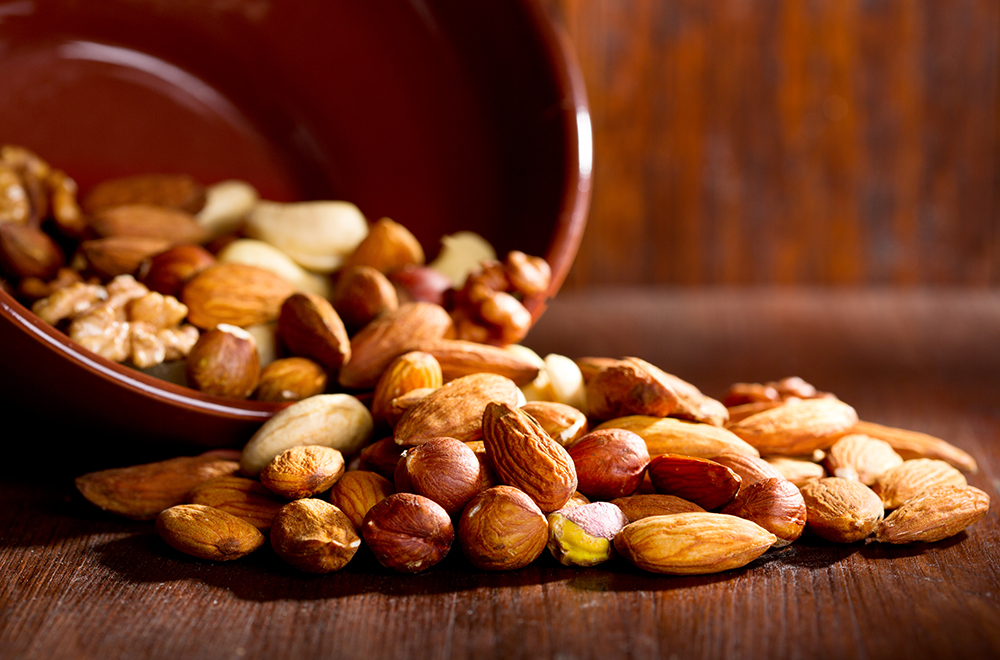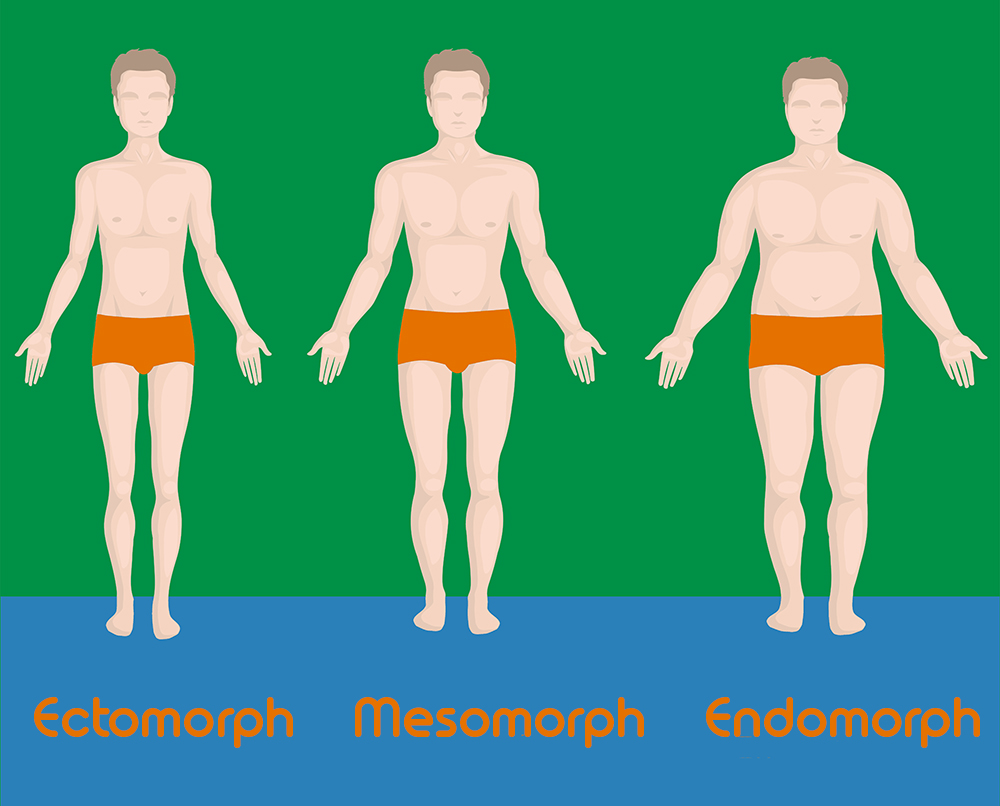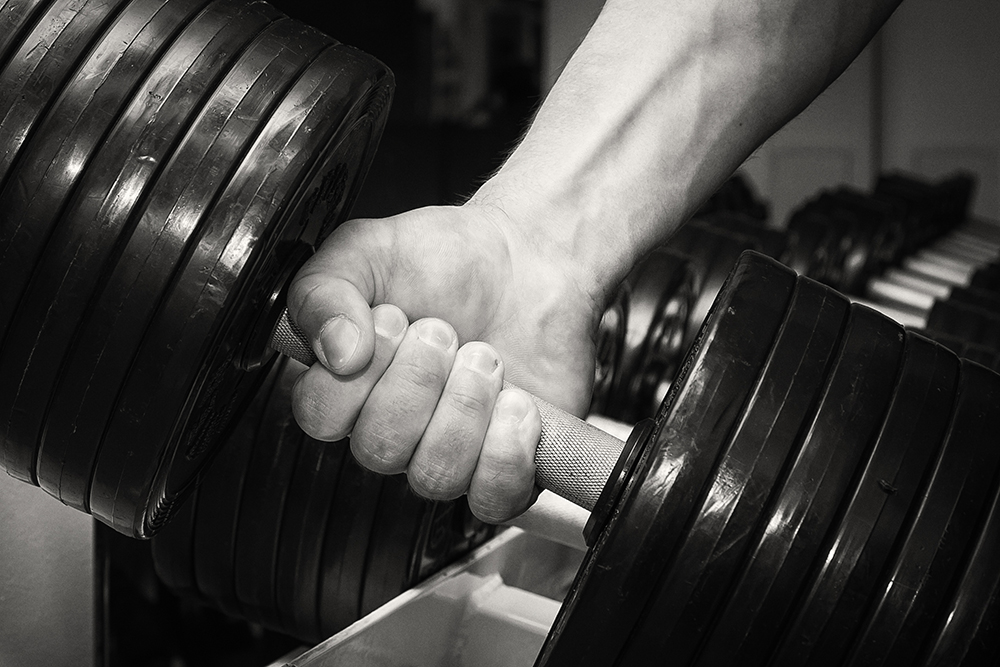- Home
- Health
- Gain Weight
- Metric
 Weight Gain Calculator: Put on Lean Muscle Mass
Weight Gain Calculator: Put on Lean Muscle Mass

Usage Instructions
Are you trying to gain weight? This calculator will help you determine a daily caloric intake for your desired goal.
First input your gender, height and weight. Then choose a daily activity level from the available pull-down menu. Enter how much you'd like to put on and a time period that you would like to achieve your goal during.
Press CALCULATE, and you’ll see estimated calorie requirements for gaining weight, as well as a number for maintaining.
The above should give a fairly accurate calorie number for gaining or losing weight, but to get a most accurate Total Daily Energy Expenditure (TDEE), get your body composition tested and enter your stats in the "body fat percentage" field.
Please seek the help of medical & nutritional professionals before drastically altering your exercise or diet.
Why People Want to Gain Weight
Most of the Country is Overweight
As we age our metabolic rates slow and it is easier for most people to put on (unwanted) weight. Men in their 40s and 50s or women who reach menopause sometimes unexpectedly gain significant weight. Even many young children who eat diets high in processed foods are significantly overweight.
While nearly 2/3 of Americans are overweight or obese, being too skinny can also be unhealthy.
Advice for Those Who Are Underweight
Having a BMI below 18.5 is generally considered to be unhealthy.
About 1% of American men 20 or over fall in this range, while about 2.4% of American women do.
Being drastically underweight can lead to a significant increase in risk of early death as it can impair immune function and lead to osteoporosis. It can also lead to lower fertility and an increased risk of dementia.
Some people may also want to put weight on to boost their self esteem, improve their self image, and get stronger to do a better job at work or in athletic competitions. There are also significant health considerations beyond these types of motivations.
Leading Causes of Being Underweight
As we age our metabolic rates slow and it is easier for most people to put on (unwanted) weight. Men in their 40s and 50s or women who reach menopause sometimes unexpectedly gain significant weight.
Many medical conditions can make it hard to gain weight & can lead to unhealthy weight loss in a formerly fit person. Some of the leading causes are highlighted below.
- Eating Disorders: Anorexia nevrosa and bulimia nervosa are potentially life-threatening mental disorders.
- Hyperthyroidism: An overactive thyroid can increase your metabolic rate, making it hard to keep weight on.
- Infections: Parasites, HIV/AIDS. tuberculosis & other infectious diseases can cause the body to spend much of its energy fighting off these diseases.
- Cancer: cancerous tumors can burn a significant amount of energy.
- Diabetes: While diabetes is more common in overweight people than underweight people, uncontrolled type 1 diabetes can lead to weight loss issues.
- Celiac disease: This autoimmune disease destroys villi of the small intestine when people who have it consume gluten. Most people who have this are unaware of their gluten intolerance.
If your body weight trend changes drastically without a shift in calorie consumption or exercise routine you should seek medical analysis so a doctor can ensure you do not suffer from one of the above conditions.
Different people have different reactions to major life changes. Here are a couple other examples of other things that can drive rapid weight loss or gain.
- Psychotropic Drugs: Some of the most popular searches for gaining weight (in an undesirable fashion) include the brand names of popular SSRI antidepressants like Zoloft, Effexor, Celexa, or Abilify. While such drugs can lead to weight gain in some people, they can also lead to weight loss in others. And if they lead to significant mood changes, they can also have an impact on the partner or parent or child of a person who is taking such a drug.
- Depression, Stress & Anxiety: Some people eat to relieve stress & anxiety. Rising cortisol levels can increase appetite. Others feel so devastated they can't eat. And, once again, drugs to treat these sorts of conditions like Cymbalta also come up on searches related to unexplained changes in weight.
How to Gain Weight Fast & Safely
Weight Gain Basics: Calorie Mismatch
Genetically some people are predisposed to being overweight, while others struggle to put weight on.
The general rule of weight gain is you have to eat more calories than you consume.
People who are looking to gain weight slowly should typically consume an additional 300 to 500 calories per day, while people looking to gain weight fast should consume an additional 700 to 1,000 calories daily.
If you exercise more while trying to gain weight, then you have to also add the calories burned during those workouts to your total calorie load. For example, if you were eating 2,000 calories daily & started to burn an extra 600 calories working out each day, you would need to add the above 300 to 500 or 700 to 1,000 calories to the base number of 2,600.
| Calorie Considerations | Gain Weight Slowly | Gain Weight Fast |
|---|---|---|
| Original Calorie Load | 2,000 | 2,000 |
| Calories Spent Working Out | 600 | 600 |
| Additional Calories to Eat | 300 - 500 | 700 - 1,000 |
| Total Daily Calories | 2,900 - 3,100 | 3,300 - 3,600 |
Each 500 calorie daily differential equates to a pound of body mass per week.
Keep in mind that as you gain muscle mass your steady state calorie requirements to maintain the increased mass will also increase.
Once you get to the desired body weight, you can eat the maintaining calories & not eat the additional calories which were required to keep gaining weight.
Provided there is not an issue like anorexia or bulimia, eating more calories is not hard to do. But you want to make sure you are eating the right kind of calories.
Healthy vs Unhealthy Calories
Refined Carbohydrates
Many of the cheapest calories are also the most addictive and least healthy.
Wolfing down endless refined carbohydrates by eating chips & donuts while drinking soda can lead to a rapid deterioration of your health and the weight gain going to your belly area, which is linked to increased risk of heart disease & type 2 diabetes.
Carbohydrates act as fast fuel. The body can store excess calories in fat but the body, but it can not convert carbohydrates into proteins.
Processed junk foods can help you put on belly fat rather than lean muscle mass.
Proteins

The body uses protein to build lean muscle mass. So if you want to eat more calories to put on healthy weight, it can be a good idea to eat a diet rich in proteins.
Some of the most popular calorie-dense & protein-rich foods include:
- Nuts: peanuts, walnuts, macadamia nuts, almonds or even foods like peanut butter or trail mix.
- Meats: Fattier cuts of beef, pork, chicken & other meats including salmon & other oily fish. Whole eggs are also a fantastic source of protein.
Some people also supplement their meals with high protein weight gainer shakes.
The United States RDA for protein is 0.4g/lb or 0.8g/Kg. Those seeking to gain muscle mass should exceed this by a significant margin.
You should aim to eat at least 0.7 to 1 gram of protein per pound of body weight if you are trying to build body mass. This equates to 1.5 to 2.2 grams of protein per kilogram.
People on higher calorie diets & professional athletes can go well above these levels. If you are "cutting" to lose body fat the recommended range can go as high as 1.5 grams per pound, which equates to 3.3 grams of protein per kilogram.
Fats
The low-fat diet craze over the past 30 years was largely a way of promoting diets where processed junk foods took the place of more expensive calories.
The following are all big winners for those looking to gain healthy weight:
- High-fat dairy foods: While milk, cheeses, creams, full-fat yogurt.
- Oils: Avocado oil & extra virgin olive oil.
- Meats: Go for the fattier cuts when you get a choice.
Carbohydrates
While we don't advocate ultra-refined carbohydrates (like much of the garbage in the middle isles at most grocery stores), mixing in some bananas, avocados, dried fruits like dates & raises, along with whole grains like oats, granola and brown rice into your meals can help bring your meal costs down while still ensuring you have a calorie dense meal that helps you gain weight.
Sweet potatoes and yams are also popular choices.
Cereal bars & dark chocolate can be a good way to get some quick additional energy between meals.
Macronutrient Ratios

If you are serious about putting on lean muscle mass you should consume an above average share of your calories from protein. Obi Obadike suggested the following as baseline starting points for macronutrient ratios.
| Body Type | Protein | Fat | Carbs |
|---|---|---|---|
| Ectomorph (skinny) | 25% | 20% | 55% |
| Mesomorph (muscular & athletic) | 30% | 30% | 40% |
| Endomorph (broad & thick) | 35% | 40% | 25% |
Keep in mind the above is based on the overall percent of calories consumed. Carbohydrates & protein have 4 calories per gram, whereas fat has 9 calories per gram. For a hypothetical 2,500 calorie diet here is the above table in grams.
| Body Type | Protein | Fat | Carbs |
|---|---|---|---|
| Ectomorph (skinny) | 156 g | 56 g | 344 g |
| Mesomorph (muscular & athletic) | 188 g | 83 g | 250 g |
| Endomorph (broad & thick) | 219 g | 111 g | 156 g |
You can use the following calculator to quickly estimate your macronutrient consumption needs. By default it is set to a 2,500 calorie diet using the above Mesomorph ratio.
Many diets have different ratios, but what works best for you depends on your body type, your fitness & your goals. Here is a list of the macronutrient breakdown for some common diets.
| Diet Type | Protein | Fat | Carbs |
|---|---|---|---|
| High Carb | 25% | 15% | 60% |
| Moderate | 30% | 20% | 50% |
| Zone Diet | 30% | 30% | 40% |
| Low Carb | 45% | 30% | 25% |
| Keto | 15% | 75% | 10% |
Flip the Script
Many of the tips associated with weight loss are reversed for gaining weight. For example, ...
- Drinking Water: While you still want to drink water to remain healthy, if a person was trying to lose weight they might try to drink water before each meal. If you are trying to gain weight, it is better to eat on an empty stomach.
- Drinking Calories: People trying to lose weight should minimize the number of calories they drink. People who are trying to gain weight may want to regularly drink milk, supplement shakes & look for other ways to add calories to their drinks like adding cream or butter to their coffee.
- Eating Vegetables: A person who is trying to lose weight might want to eat their vegetables first, whereas a person who is trying to gain weight should eat their calorie dense foods first.
- Use Large Plates: Eating off a larger plate makes it seem like you are eating less food than you are. You should also eat frequently throughout the day.
Exercising
Heavy Weight Lifting

Those who are trying to lose weight should focus primarily on cardio, whereas those who are trying to gain weight should focus on low-rep high-weight lifts at least 2 to 4 times per week.
Most people who are serious about weight lifting break their routines down into specific muscle groups by day. Here are some examples.
- Leg building workouts: barbell squats, dumbbell lunges, leg press, leg extensions, lying leg curls & standing calf raises
- Upper body workouts: incline chest press, incline row, dumbbell pullovers, supine ventral raise, lateral raise, ventral raise, side pullovers
If you are new to lifting it is worth hiring a personal trainer or at least going with a friend who is well experienced at the gym.
It is crucial when you begin to start slow and build your way up. Trying to look big on the first day is a great way to pull a muscle or worse, and this can ultimately curtail your exercise routine for an extended period of time.
If you feel sharp pain, discontinue exercise. If the pain persists seek medical care as needed.
Taking creatine monohydrate can also help you gain muscle mass.
Cardio
Some people who want to put on muscle mass try to avoid cario, but cardiovascular exercises are vital to create a stronger heart and lungs. When you mix cardiovascular exercises in with your weight lifting routine, keep in mind you will need to consume extra calories to offset any you burn.
If you do aerobic exercises at a different time of day than your anarobic exercises you should make sure you have at least a protein shake first so your body feeds off your fats and energy from the foods rather than going into self-preservation and feeding off your muscles.
If you do both workouts on the same trip to the gym & are trying to put on muscle mass it is essential to do anarobic exercise first, so you have the energy levels needed to do maximum muscle scarring.
People who do cardio first often find they don't have the strenght to lift as much as they would have been able to if they did their lifts first, particularly on legs days.
If you find you need breaks during your lifts then you can do the most strenuous lifts early in the set and stack a superset of rotations between strength & cardio in your workout.
Advice for Women
Pregnancy
Pregnant women should talk to their health provider before beginning an exercise routine.
Generally speaking, women who plan to get pregnant should exercise before the pregnancy & during the pregnancy, but some of the advice in this article is not advisable for pregnant women.
For example, women who are trying to gain weight during pregnancy should not do heavy weight lifting.
More advisable exercises during pregnancy include low-impact aerobic exercises like walking, swimming, stationary biking, yoga and ellipticals.
Exercises which require rapid momentum shifts like tennis, racquetball or basketball are much less advisable as the jarring shifts may not be good for the baby.
Pregnant women should also eat lots of leafy vegetables & make sure they drink plenty of water.
Women with health issues including diabetes, heart disease & asthma may want to limit their exercise. Other pregnancy related issues can also make exercise risky, particularly in the first trimester.
- Pregnant women typically gain between 2 and 4 pounds in the first trimester followed by about 1 pound per week throughout the duration of their pregnancy.
- Overweight women will typically need to gain between 15 to 20 pounds.
- Underweight women will typically need to gain between 28 to 40 pounds.
- Women who are having twins will typically need to gain about 37 to 54 pounds.
Women who do low-impact aerobic exercise throughout their pregnancy tend to have better energy & sleep quality, lower stress & depression, improved self-image and have an easier time getting their body back in shape after pregnancy. Exercises during pregnancy can also be beneficial for the baby.
Other General Health Tips
Sleep quality is paramount. Anything that disturbs the quality of your sleep makes it harder for your muscles to repair themselves and grow.
People who smoke cigarettes typically weigh less than non-smokers & sometimes they replace the urge to eat with smoking, thus you shouldn't smoke if you are trying to gain weight.
Drinking alcohol can both impact your sleep quality and give you many of the same types of calories that sodas do, thus alcohol should be minimized or avoided.
Many illegal hardcore drugs also suppress appetite & impact sleep quality, so they should be avoided. Even something as simple as coffee at the wrong hour can harm your sleep quality.
YOU: Before and After

Change privacy settings
